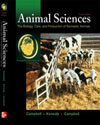
Physiology of Egg Laying |  |
Chapter Summary| There are many colors, shapes, and kinds of eggs. Nature designed the eggs of each species especially for the perpetuation of that species. Eggs of precocial birds contain more yolk (it contains the greatest food value) than those of altricial birds. This correlates with the greater maturity of precocial birds at birth.
Humans have found the egg both to possess fine flavor and to be a rich source of important nutrients. By means of domestication and continued genetic improvement through selection, humans have developed highly productive birds. Unlike their ancestors they lay generous quantities of eggs throughout the year and thereby enhance the nutritional status of humanity. The egg-laying patterns of birds are closely related to changes in light. Through research humans have discovered ways of applying artificial light and thereby minimizing seasonal fluctuations in egg production.
Although percentages of egg constituents vary among species the eggs of all species contain the same components. Many factors influence the composition, size, and the intensity with which eggs are laid. However, egg composition of a given bird species is nearly the same day after day and throughout the world.
|
|
|